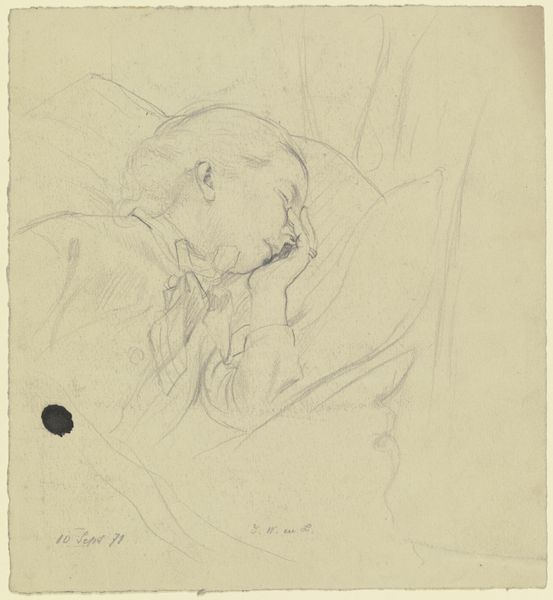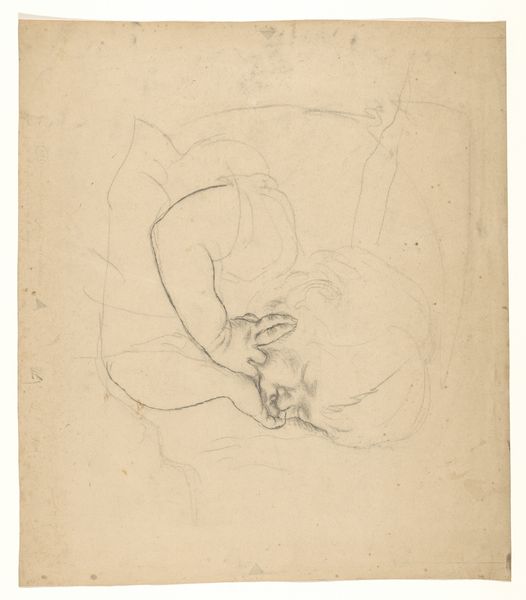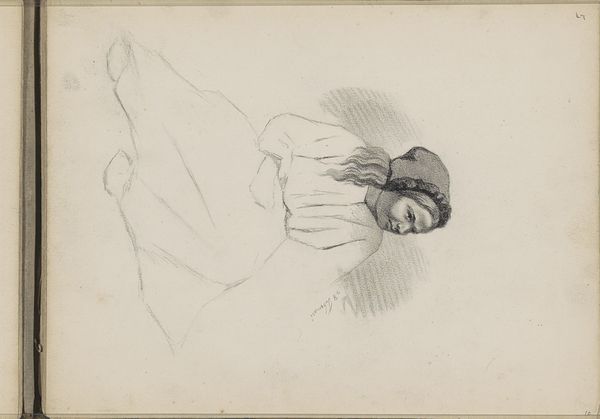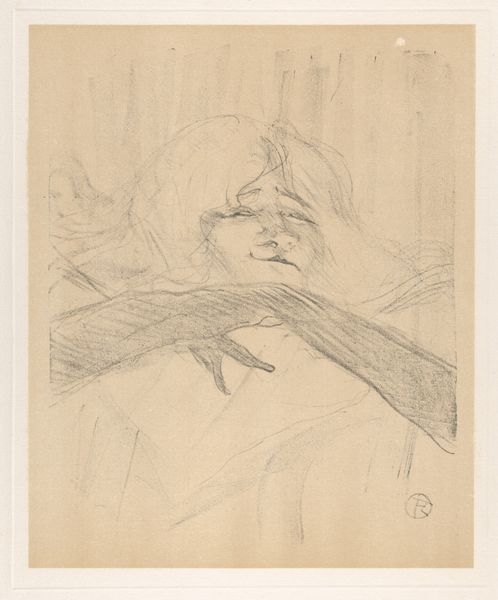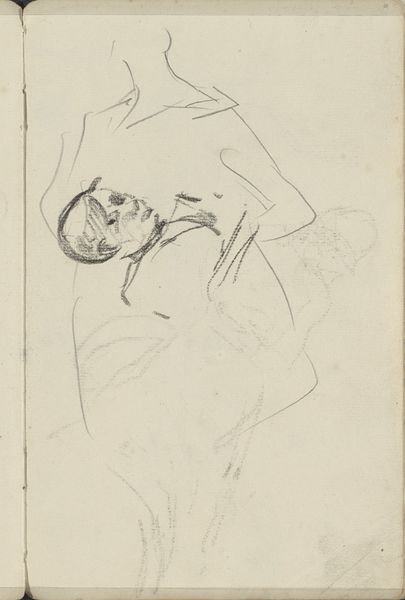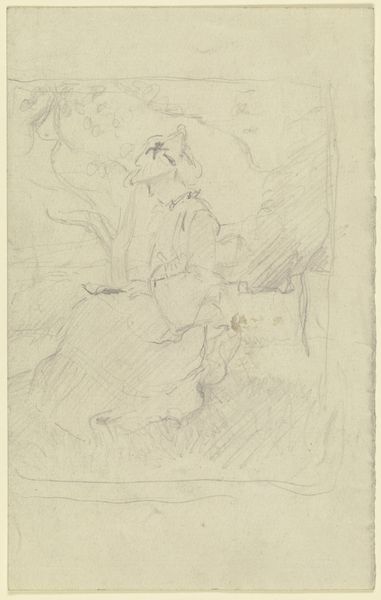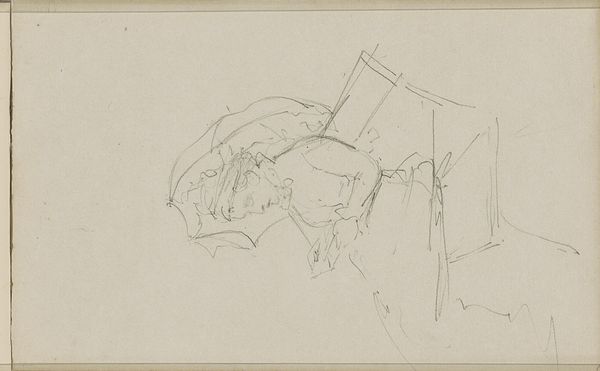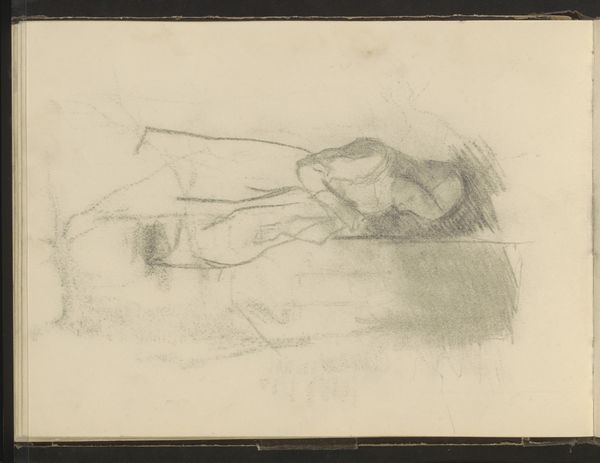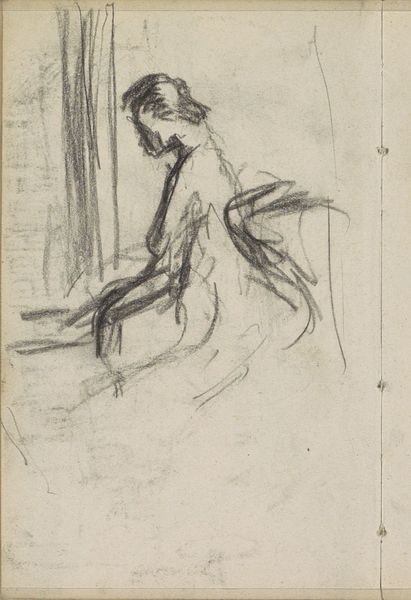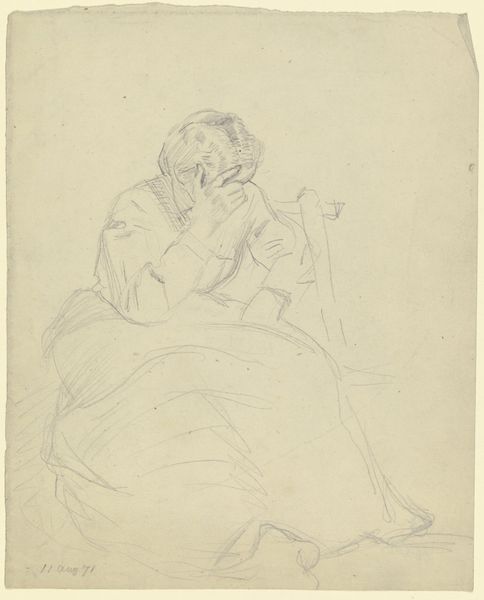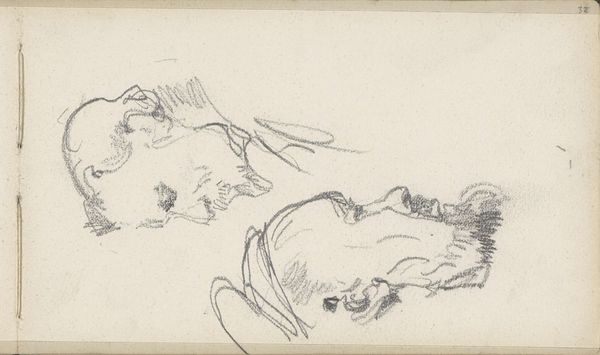
drawing, print, pencil
#
portrait
#
drawing
# print
#
pencil sketch
#
pencil
#
post-impressionism
Dimensions: 22-5/16 x 15 in. (56.7 x 38.1 cm)
Copyright: Public Domain
Editor: This is Henri de Toulouse-Lautrec's "V. Chanson Ancienne," created around 1898 using pencil and printmaking techniques. It has such a subtle, almost ghostly quality to it. What immediately strikes you about the composition? Curator: The arresting feature of this piece is its deft manipulation of line and space. Observe the economy of means with which Lautrec defines form. The subject emerges from the delicate network of graphite, foreground and background blurred by its gossamer touch. What theoretical framework can we apply here? Semiotics is interesting because it gives us tools to approach art. We can think about how lines signify form, and shadows infer depth, yet both barely emerge from the white canvas, the almost total erasure giving way only to her face, hands and shoulders. Do you observe a clear demarcation between figure and ground? Editor: Not really, it’s more like the figure emerges out of the ground, or is on the verge of dissipating back into it. Are you saying that the sketch is intentionally unfinished? Curator: The ‘unfinished’ aspect invites contemplation on the nature of representation itself. It posits art as a process, an unfolding, rather than a fixed endpoint. Notice, for instance, how the artist directs our eye through a deliberate asymmetry; what structural relationships does that create? Editor: I see what you mean! I'm also wondering if this ‘incomplete’ aesthetic could represent how memories begin to fade or how fleeting performances exist ephemerally in time? Thank you, that's helpful. Curator: It's interesting to consider these concepts with visual grammar as their basis. Now, can you identify some other works with a similar compositional structure and intentional lack of resolution?
Comments
No comments
Be the first to comment and join the conversation on the ultimate creative platform.
